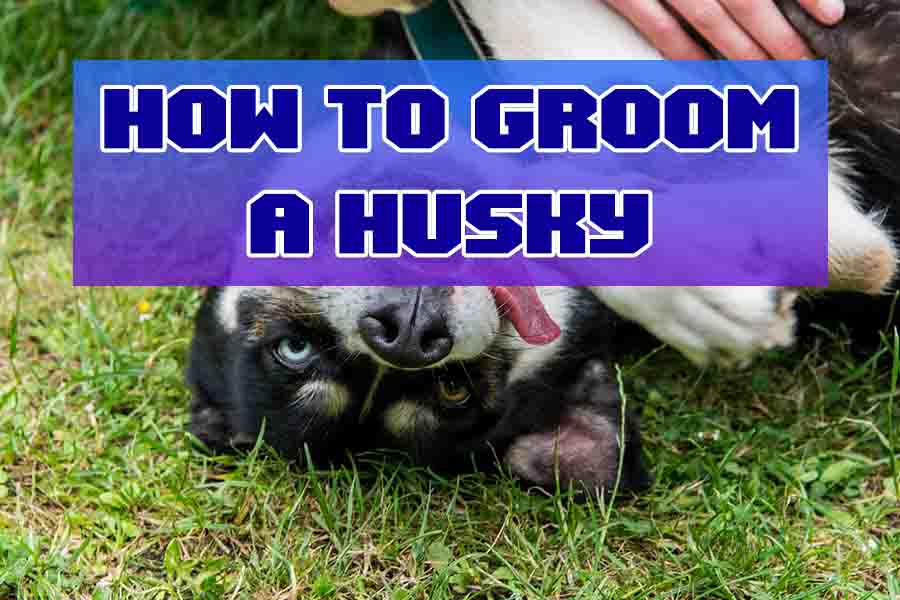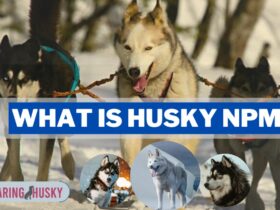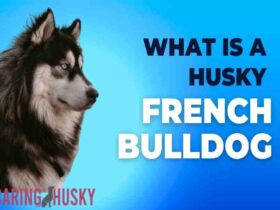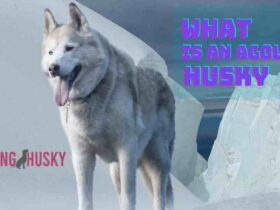Grooming a Husky is not just about keeping their coat looking beautiful; it’s a crucial aspect of their overall health and well-being. Huskies are known for their stunning double coats, but this unique feature requires specific care and attention. This comprehensive guide will walk you through the essential steps and techniques to ensure that your beloved Husky remains healthy, comfortable, and looking their best. From understanding their coat to mastering the right grooming tools and routines, we’ll provide you with all the knowledge and tips you need to become a pro at grooming your Husky. So, let’s embark on this grooming journey and ensure your Husky shines inside and out!
How To Groom A Husky?
Grooming a Husky is a crucial part of caring for this magnificent breed, and it involves several key steps and considerations to keep your furry friend healthy and comfortable. Here’s a detailed guide on how to groom a Husky:
Understanding the Husky Coat: Start by comprehending the unique double coat of a Husky. They have a dense, insulating undercoat and a longer, protective topcoat. This double coat plays a vital role in regulating their body temperature.
Gathering Essential Tools: Before grooming, ensure you have the necessary tools. These include a slicker brush, an undercoat rake, a shedding blade, a de-matting tool, nail clippers, an ear cleaner, and appropriate dog shampoo and conditioner.
Regular Brushing: Regularly brush your Husky’s coat to prevent mats and tangles. Use a slicker brush to reach the topcoat and an undercoat rake to remove loose fur from the dense undercoat. Brush in the direction of hair growth to avoid damaging the coat.
Bathing Your Husky: Bathing should be done as needed, typically every 2-3 months or when they get filthy. Use a dog-specific shampoo and conditioner to maintain the coat’s health. Be cautious not to over-bathe, as it can strip their natural oils.
Drying the Coat: After bathing, thoroughly dry your Husky. Their thick coat can trap moisture, leading to skin issues if not dried properly. Use a blow dryer in a relaxed setting to prevent overheating.
Ear Cleaning: Regularly check and clean your Husky’s ears to prevent infections. Use a dog-friendly ear cleaner and a cotton ball to gently clean the ear canal gently, being careful not to go too deep.
Trimming Nails: Keep an eye on your Husky’s nails and trim them as needed to prevent overgrowth. If you’re uncomfortable doing this yourself, consider seeking professional help.
Dealing with Shedding: Huskies are notorious shedders, especially during seasonal changes. Be prepared for regular shedding and combat it by brushing them frequently. A healthy diet can also help reduce excessive shedding.
Handling Mats and Tangles: Pay attention to areas prone to mats and tangles, such as behind the ears and around the tail. Use a de-matting tool or your fingers to work through these knots gently. Avoid pulling or tugging, as it can cause discomfort.
Maintaining a Positive Grooming Experience: Ensure that grooming is a positive experience for your Husky. Treats, praise, and patience make them comfortable and relaxed during grooming sessions. Consider professional grooming services if needed.
What Are The Essential Grooming Tools Required For Grooming A Husky Effectively?
To groom a Husky effectively, you’ll need essential grooming tools to appropriately care for their double coat and overall grooming needs. Here are the essential grooming tools required:
Slicker Brush:
A slicker brush is a staple for Husky grooming. It features fine wire bristles that effectively remove loose hair from the topcoat. Regular brushing with a slicker brush helps distribute natural oils, prevents matting, and keeps the coat looking clean and healthy. Since Huskies have a thick topcoat, this tool is essential for maintaining their appearance and comfort.
Undercoat Rake:
The undercoat rake is designed to reach and remove the loose fur from the dense undercoat of a Husky. This tool is essential because Huskies have a double coat, and their undercoat can become impacted with dead hair if not properly cared for. An undercoat rake helps prevent shedding and keeps your Husky’s skin and coat in good condition.
Shedding Blade:
Shedding blades are practical tools for removing loose undercoat fur, a common issue with Huskies, particularly during seasonal changes. The shedding blade’s unique design lets you quickly and efficiently remove dead hair from your Husky’s coat. Regular use can reduce shedding and keep your home cleaner.
Dematting Tool:
Huskies are prone to mats and tangles, especially behind the ears and around the tail. A de-matting tool is essential for gently working through these knots without causing discomfort or skin irritation. It helps maintain the coat’s integrity and prevents the formation of larger, harder-to-remove mats.
Nail Clippers:
Proper nail care is crucial for your Husky’s comfort and health. Overgrown nails can affect their gait and cause discomfort. Invest in high-quality dog nail clippers and learn how to safely trim your Husky’s nails. Regular nail maintenance is essential for their well-being.
Ear Cleaner:
Huskies have erect ears that can trap dirt and moisture, making them susceptible to ear infections. An appropriate dog ear cleaner and cotton balls are essential for regular ear cleaning. Keeping their ears clean and dry helps prevent infections and discomfort.
Dog Shampoo and Conditioner:
Choose a dog-specific shampoo and conditioner that suits your Husky’s coat type. Harsh human shampoos can strip the natural oils from their coat and skin, leading to dryness and irritation. High-quality dog grooming products help maintain a healthy and lustrous coat.
Blow Dryer:
After bathing your Husky, it’s important to thoroughly dry their coat to prevent moisture-related skin issues and mats. A blow dryer with a relaxed setting is ideal, allowing you to dry them gently without overheating. Ensure your Husky is completely dry, especially in colder weather.
Husky-Specific Grooming Tips
Husky-specific grooming tips are essential for Husky owners to address the unique needs of this breed’s double coat and maintain their overall health and appearance. Here are some specific grooming tips for Huskies:
Huskies are bred for cold climates and have a double coat that provides insulation. During cold seasons, avoid excessive brushing as it can strip away the essential oils that help keep your Husky warm. Instead, focus on regular but gentler brushing to remove loose hair and prevent matting.
In warmer climates or during sunny days, Huskies with lighter coat colors may be at risk of sunburn. Use dog-safe sunscreen on areas with exposed skin, such as the nose, ears, and belly. Additionally, consider providing shade and limiting outdoor activities during peak sunlight hours.
Invest in a high-quality de-shedding tool, such as a shedding blade or undercoat rake, to manage Husky shedding effectively. These tools are designed to remove loose undercoat fur and reduce the hair your Husky sheds around your home. Use them regularly, especially during shedding seasons.
Each Husky may have unique grooming needs based on their coat type, activity level, and overall health. Pay attention to your Husky’s specific requirements and adjust your grooming routine accordingly. For example, older Huskies may require gentler handling, while more active ones might need more frequent brushing.
Huskies often have beautiful, striking blue eyes, but their tear ducts can produce more discharge than other breeds. Use a damp cloth or dog-safe eye wipes to clean around their eyes and gently remove any discharge. This prevents tear stains and keeps their eye area clean and comfortable.
Huskies have two significant shedding seasons each year, typically spring and fall. During these times, increase the frequency of brushing and de-shedding to keep loose hair under control. Be prepared for more extensive grooming efforts to minimize shedding around your home.
Huskies’ ears can trap moisture, making them prone to infections. Regularly inspect their ears for signs of redness, odor, or discharge. Use a dog-specific ear cleaner and cotton balls to clean their ears gently. If you notice any issues, consult your veterinarian promptly.
Huskies have a furry tail that can accumulate dirt and debris. Regularly check and clean their tail, paying attention to the area closest to their body. Keeping their tail clean helps prevent discomfort and matting.
Dental hygiene is crucial for all dogs, including Huskies. Brush their teeth regularly with a dog-specific toothbrush and toothpaste to prevent dental problems. Dental chews and toys can also aid in maintaining their oral health.
Ensure that grooming sessions are positive experiences for your Husky. Use treats, praise, and patience to reward good behavior during grooming. This will make them more cooperative and reduce stress during grooming sessions.
The Benefits Of Grooming Husky
Grooming a Husky offers a wide range of benefits for the dog and the owner. Here are some of the critical advantages of regular grooming for Huskies:
- Maintains Coat Health: Grooming helps distribute natural oils throughout the Husky’s double coat, keeping it healthy and lustrous. This prevents dryness and minimizes the risk of skin issues.
- Reduces Shedding: Regular brushing and deshedding significantly reduce the amount of loose hair Huskies shed, which is especially important for this breed known for heavy shedding.
- Prevents Matting and Tangles: Brushing prevents mats and tangles from forming in the dense undercoat, enhancing the dog’s comfort and overall appearance.
- Enhances Bonding: Grooming sessions allow bonding between the Husky and its owner. It builds trust and strengthens the human-dog relationship.
- Monitors Health: Grooming allows owners to inspect their Husky’s skin, coat, ears, eyes, teeth, and overall condition regularly. This helps identify potential health issues early, ensuring timely medical attention.
- Reduces Allergens: Regular grooming can help reduce allergens in the home, such as dander and loose hair, making it more comfortable for family members with allergies.
Conclusion
Grooming your Husky is a vital aspect of their care beyond aesthetics. Following the guidelines and techniques outlined in this comprehensive guide, you can ensure your Husky remains healthy, comfortable, and looking their best. Remember that grooming is not just about physical appearance; it’s about maintaining your Husky’s overall well-being and strengthening the bond between you and your beloved pet. So, confidently embark on this grooming journey and enjoy the rewards of a well-groomed and contented Husky.
FAQ’s
Are huskies easy to groom?
Yes, Huskies are relatively easy to groom, but they require regular brushing to manage shedding and prevent matting in their double coat.
How often should a Husky be groomed?
Huskies should be groomed regularly, with brushing sessions at least once a week to manage shedding. Bathing and other grooming tasks can be done as needed, typically every 2-3 months or when the dog gets dirty.
What happens if I don’t brush my husky?
If you don’t brush your Husky regularly, their double coat may mat, leading to discomfort, skin issues, and excessive shedding throughout your home.







Leave a Reply